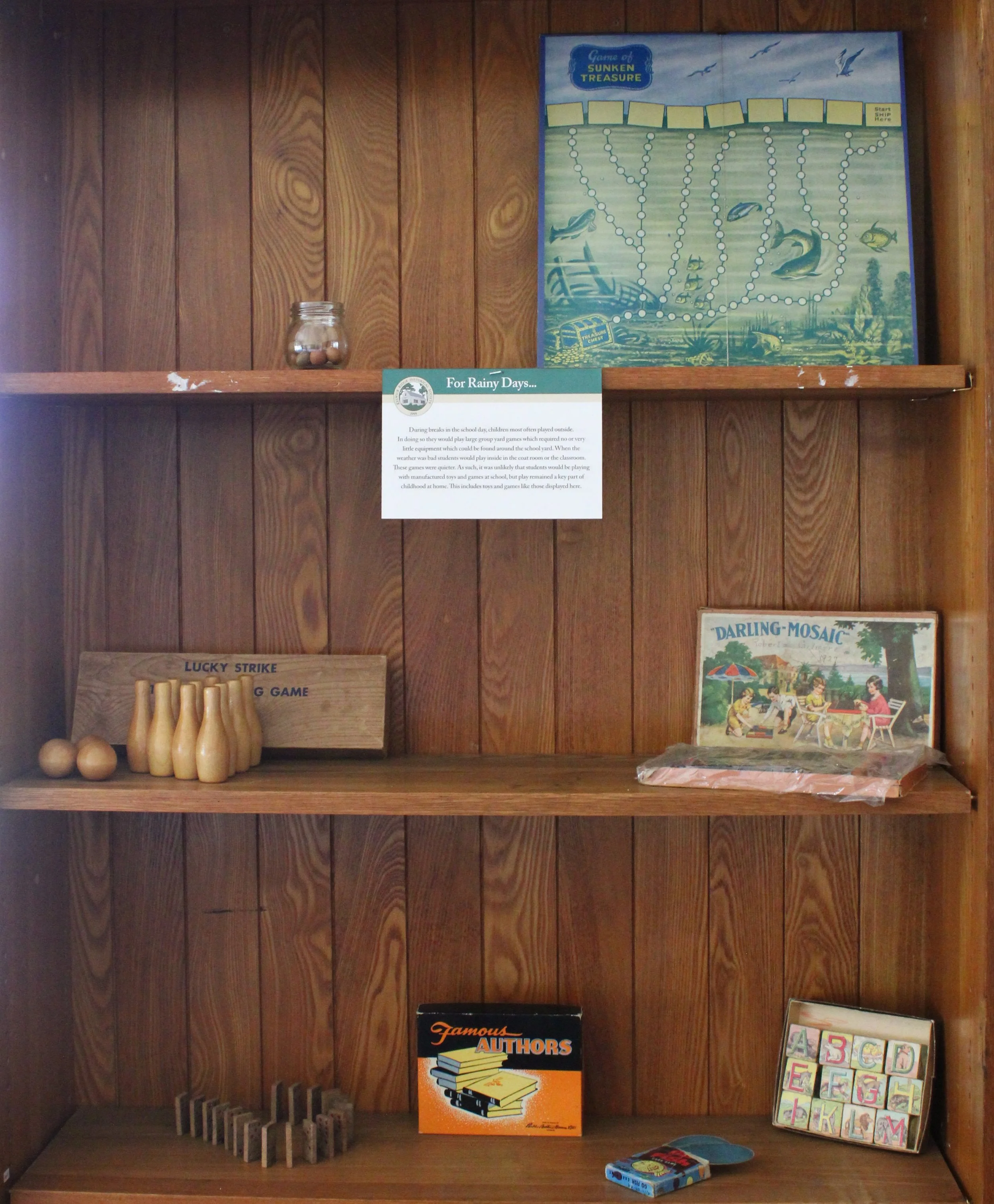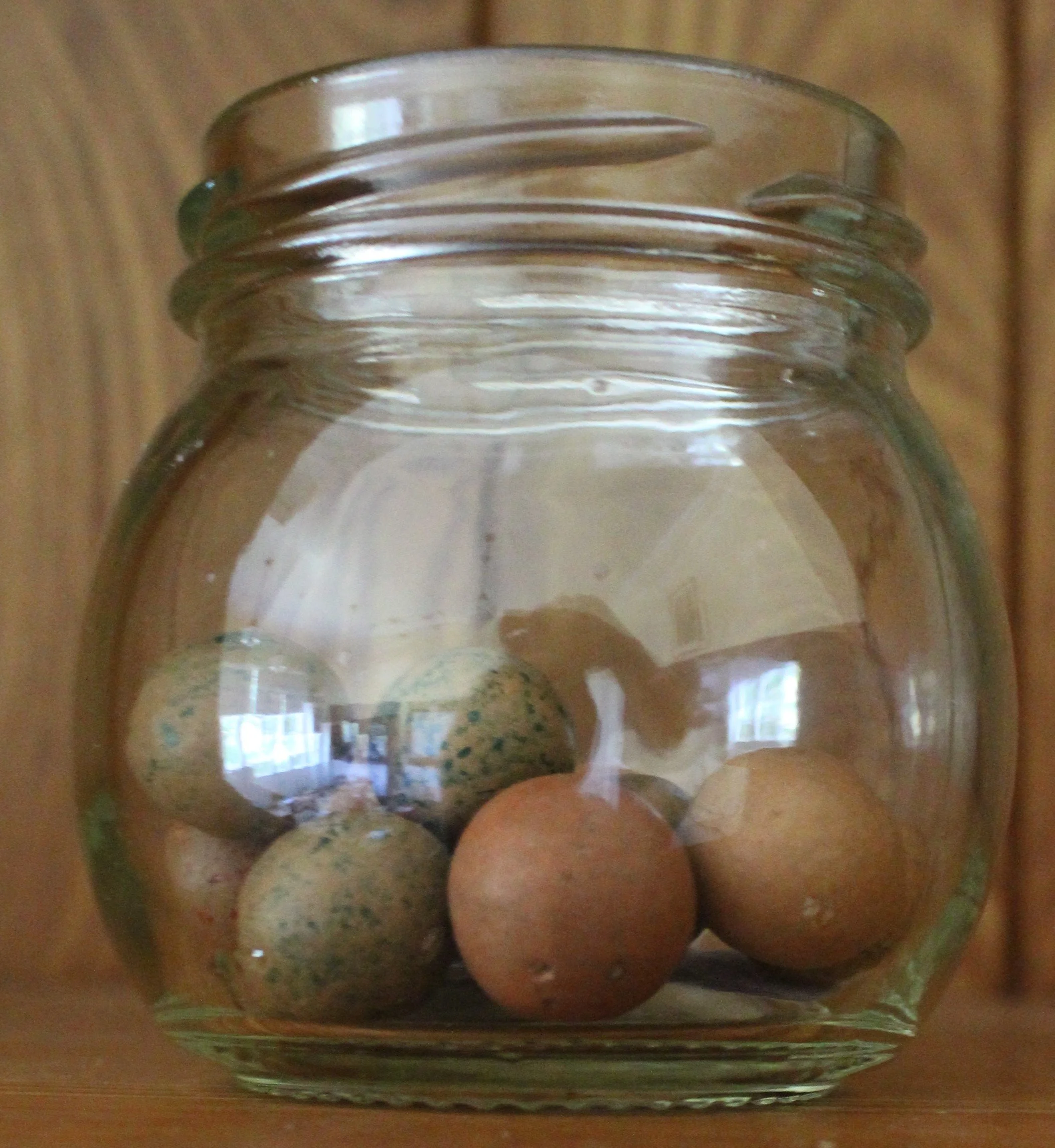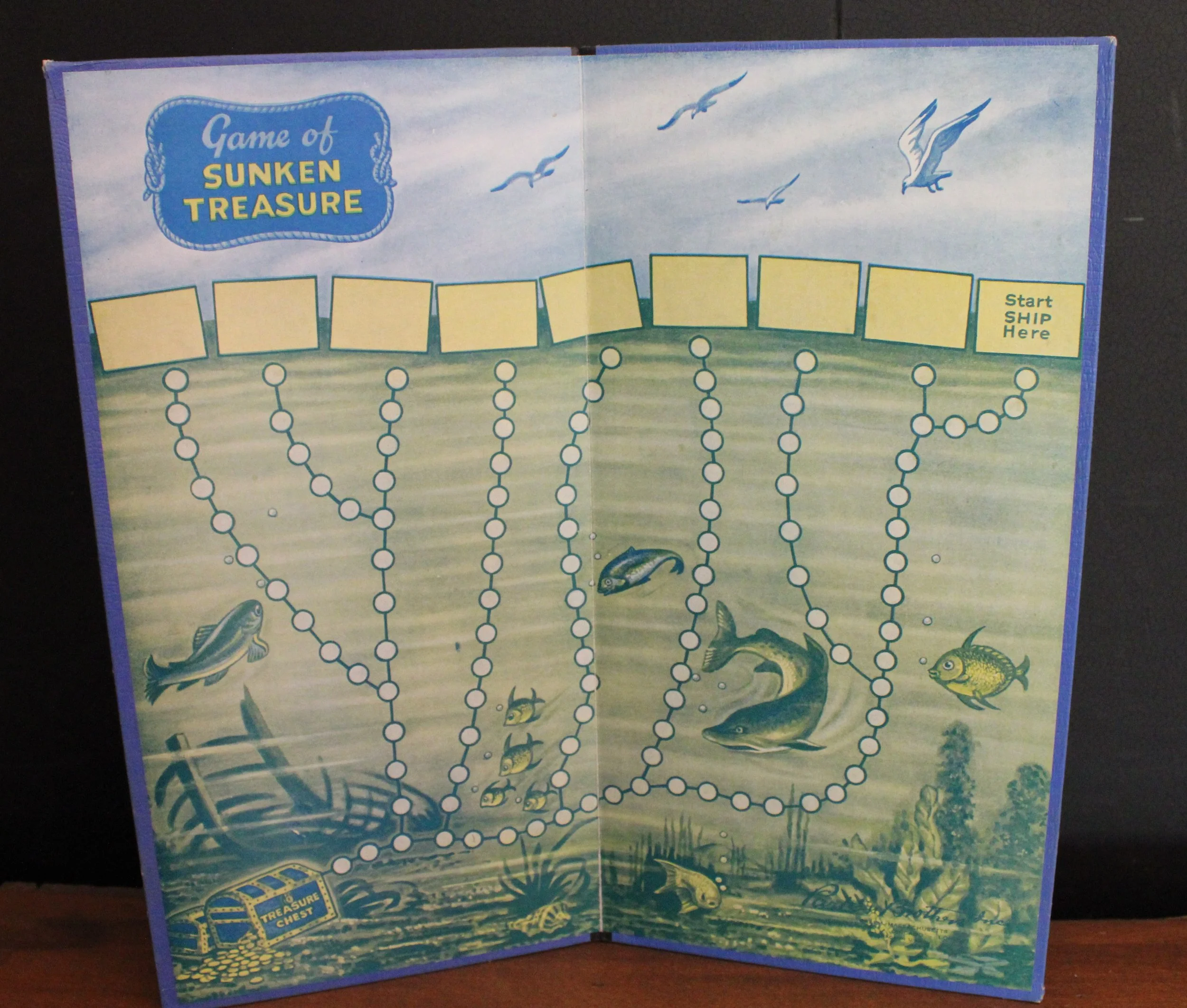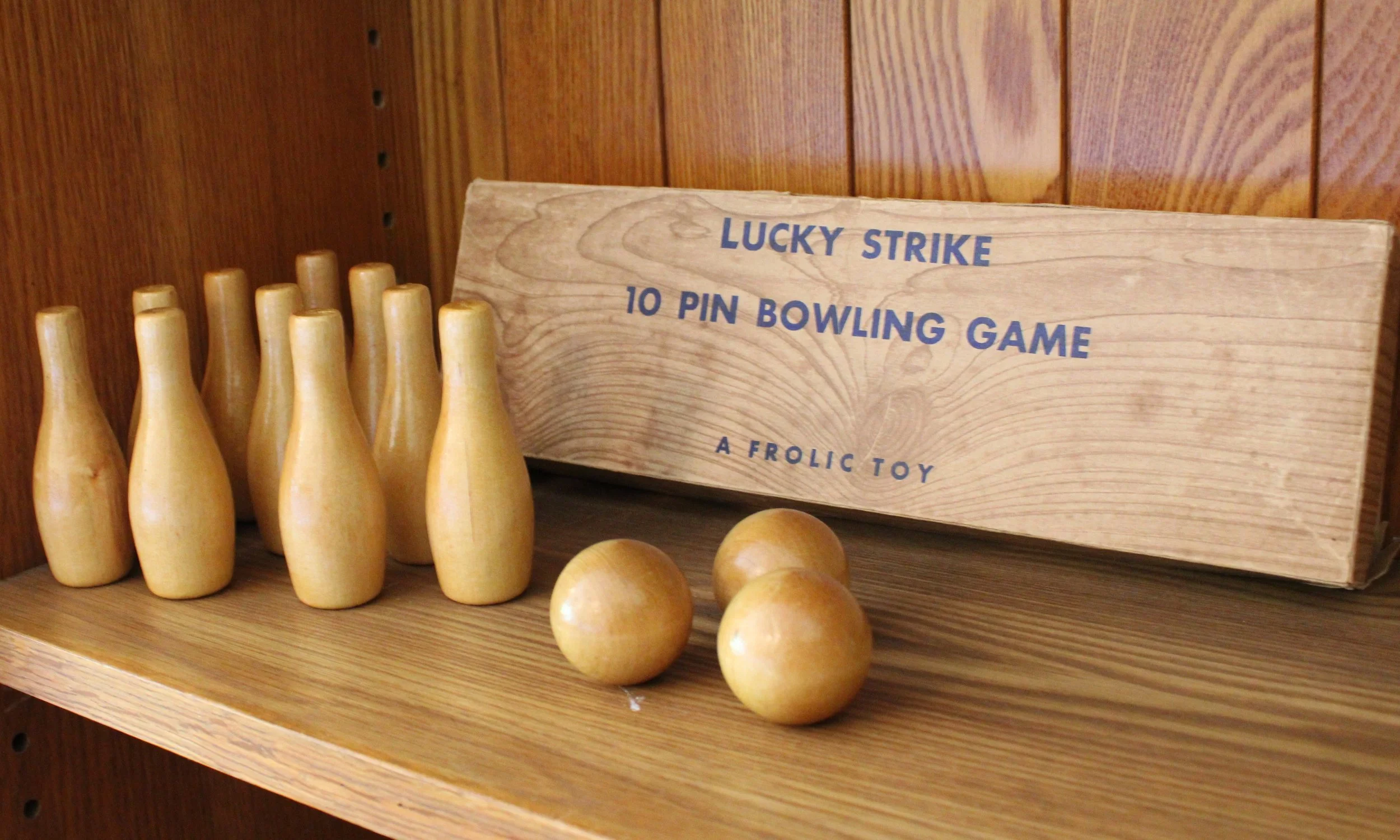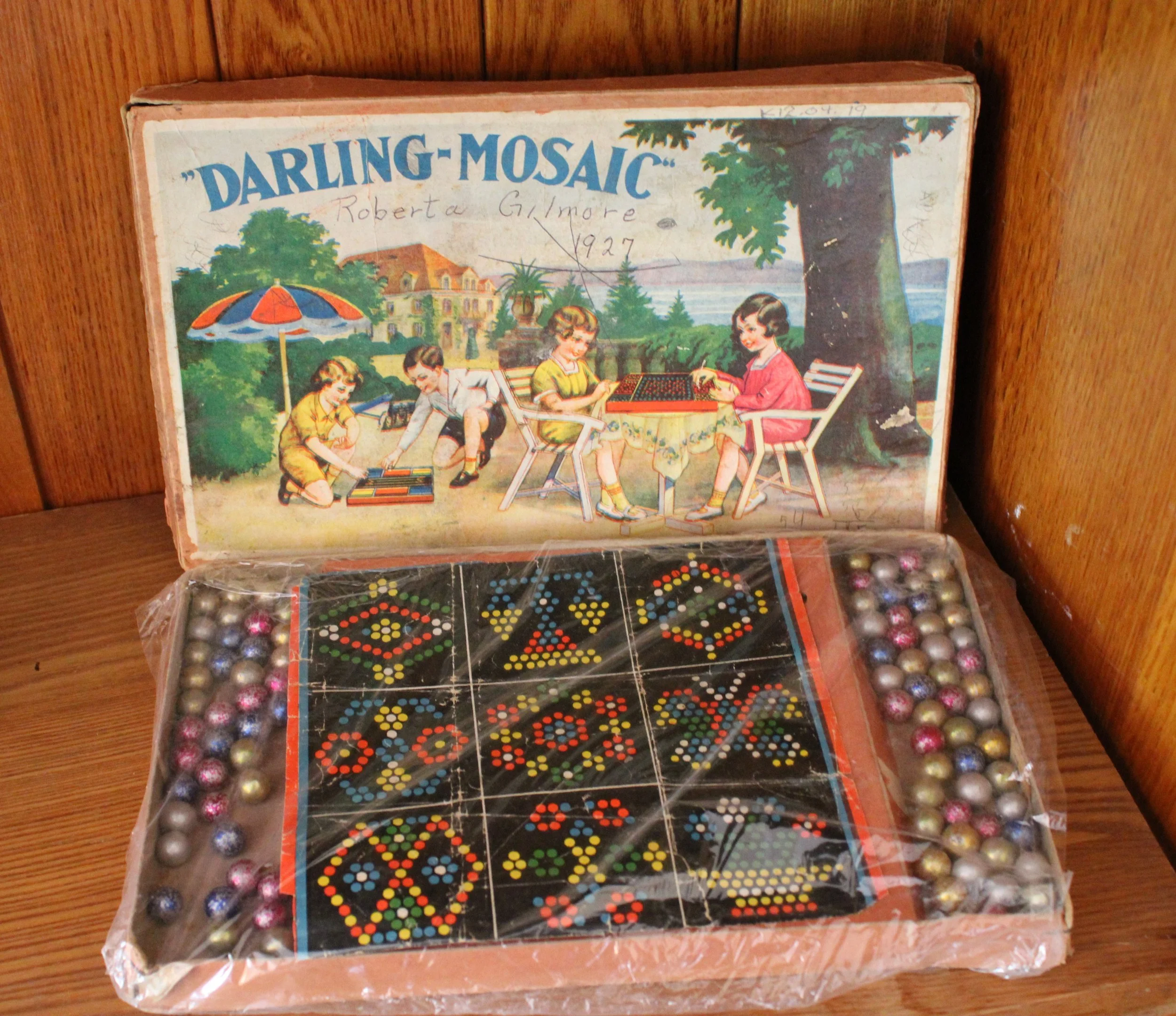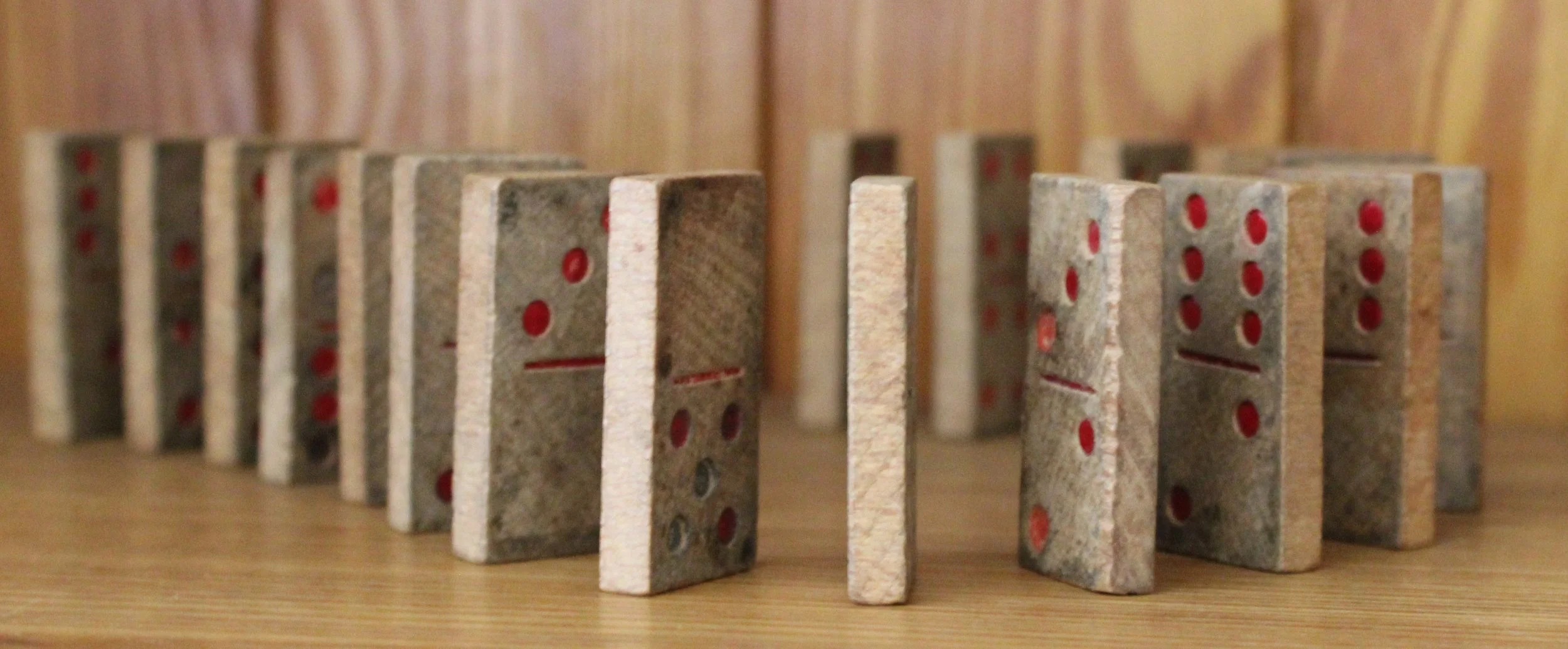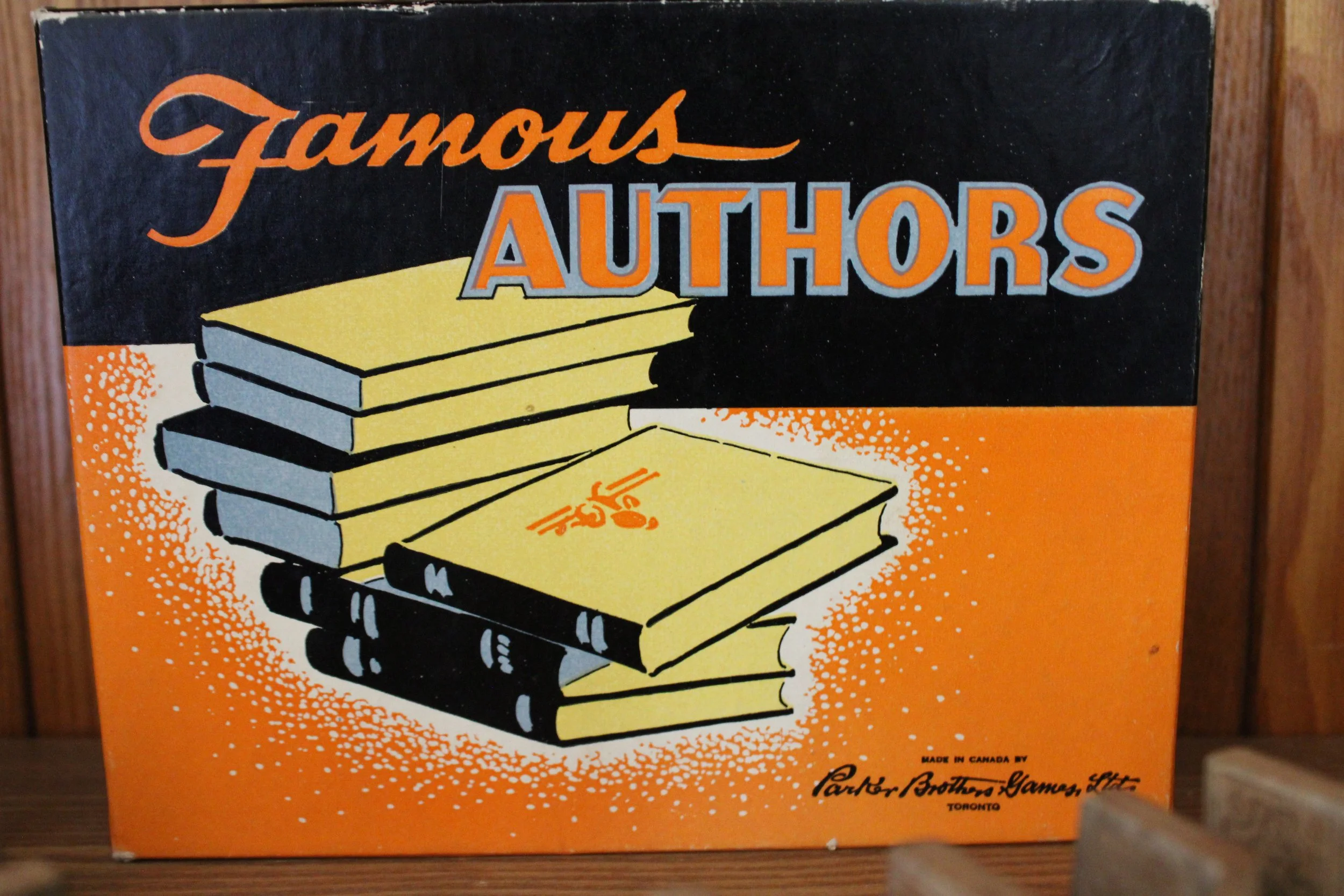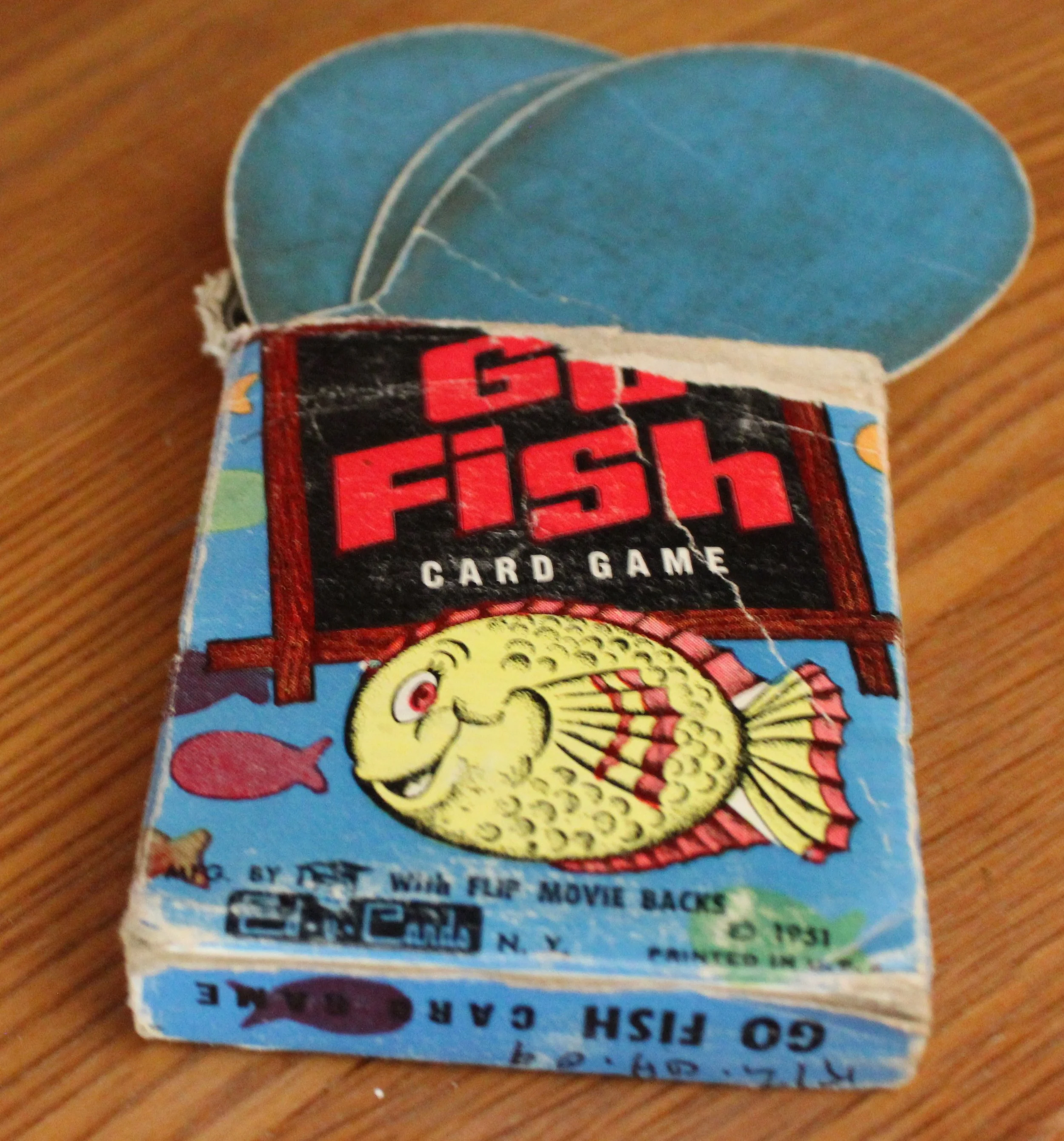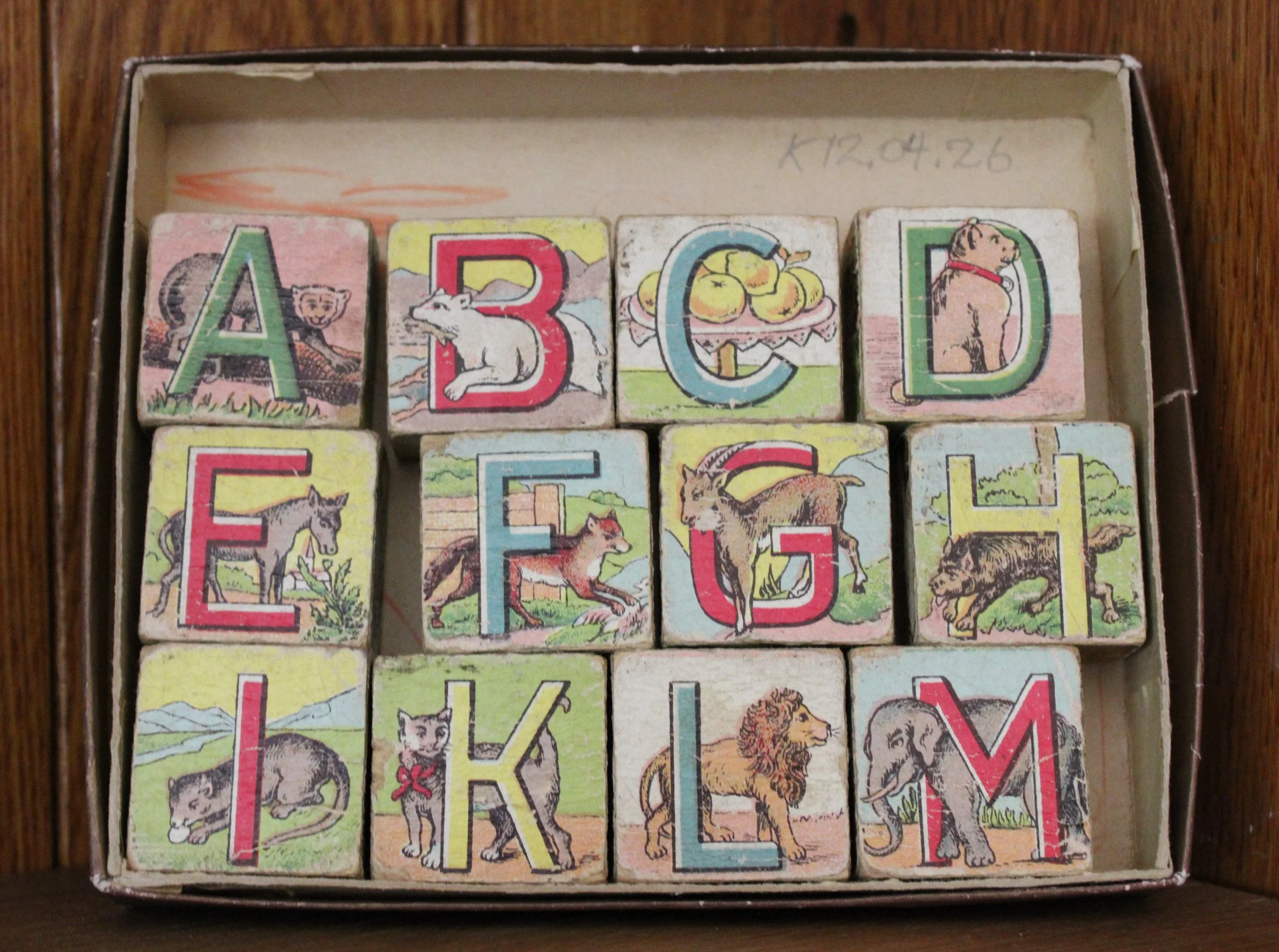Rainy Day Fun
(Click or tap images to expand)
During breaks in the school day, children most often played outside. In doing so they would play large group yard games which required no or very little equipment that could be found around the school yard. When the weather was bad students would play inside in the coat room or the classroom. These games were quieter. As such, it was unlikely that students would be playing with manufactured toys and games at school, but play remained a key part of childhood at home. This includes toys and games like those displayed here.
Clay marbles were popular in North America from the mid-1800s to the mid-1900s, especially during WWI. Other marbles, primarily produced in Germany or the USA, were not imported during wartime. Clay marbles could be made at home. These marbles are likely from the 1920s and belonged to Roberta Embelton (n. Gilmore) (1923-2011) of Keswick Ridge. Roberta worked at the Keswick Exchange as a telephone operator until 1946, when she married Gordon Embelton and started working the family farm on their property in Bear Island.
Sunken Treasure was produced by Parker Brothers in 1948. The game could be played by up to 5 players. When it was their turn, each player had to decide if they would try to get off the boat to get to the ocean floor for a piece of treasure. The first player to retrieve a piece of treasure and return to the ship, won. This game was originally owned by Donald Coburn (1915-2004). Donald graduated from KRSS in 1930, and went on to run Coburn Farms. He served as a member of multiple agricultural and historical groups.
This bowling set was originally owned by Murray Gordon of Keswick Ridge.
Marble mosaic toys were popular from the early 20th century to WWII, and were often imported from Germany, like this one, or the United States, due to their large marble manufacturing industry. The toy was to be used to make geometric shapes and served as a creative art game by placing the marbles on the provided board. This model is from the 1920s, and was originally owned by Roberta Embelton of Keswick Ridge.
Wooden dominoes were first created in China during the Ming Dynasty (1300s-1600s) and were made of bamboo. Wooden dominoes quickly spread, becoming popular in North America in the early 20th century due to their affordability and durability. Dominoes could be used in several games, often serving as a substitute for cards or dice. Particularly popular with children was the “Toppling” style, in which dominoes would be lined up and pushed over. Donald Coburn was the original owner of this set.
The Authors game is a form of Go-Fish produced by Parker Brothers. This version was produced in 1943, but the game has its origins in 1897. The game could be played by 3-5 players and had an educational aspiration. At the turn of the century, card games were particularly popular, and the company continued to have success with author-themed games. The popularity of these games pointed to the success of the company’s belief that games need not be moralistic in nature. The displayed toy originally belonged to Roberta Embelton.
This version of Go Fish was produced in 1952 by the Ed-U-Card company. This company aimed to make traditional card games in an educational manner. In this case, the cards are in the shape of fish and are based on colour recognition instead of numbers. The game was originally owned by Roberta Embelton.
Alphabet blocks originate in Europe from philosophical works in the 16-17th centuries. The blocks gained popularity by the late 1800s. This came after the introduction of multi-lettered or multi-imaged blocks in the United States in 1867. The manufacturing of these blocks originally used lithographical images. In the late 1800s, production shifted to the use of chromolithography. Blocks could also be handmade with recycled supplies. These particular blocks belonged to Keswick Ridge resident Roberta Embelton in 1925.
